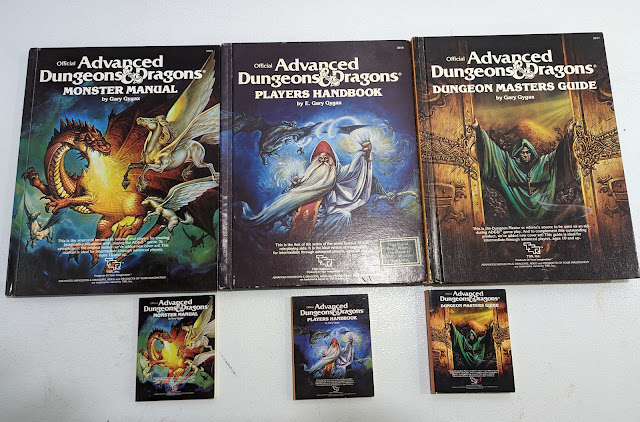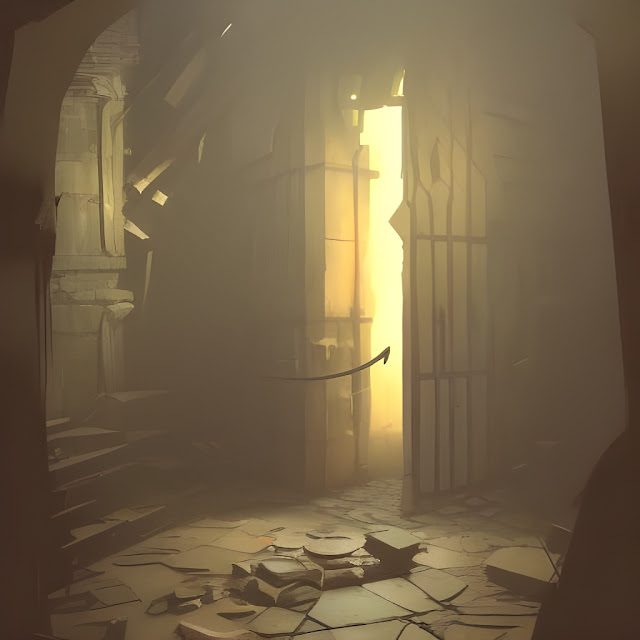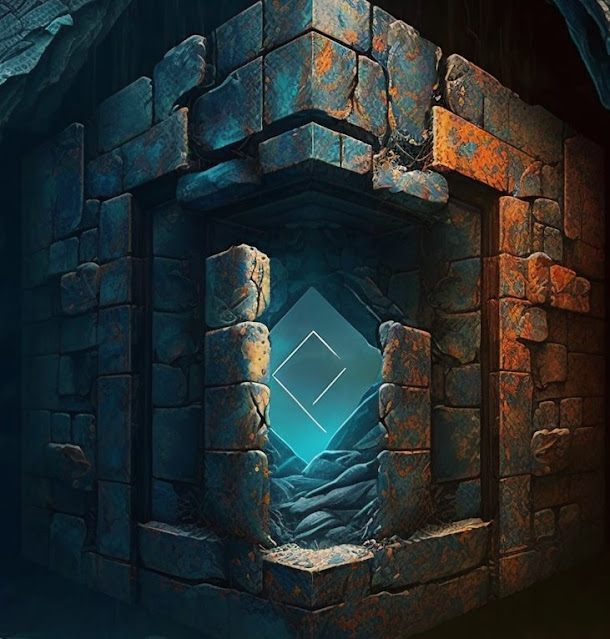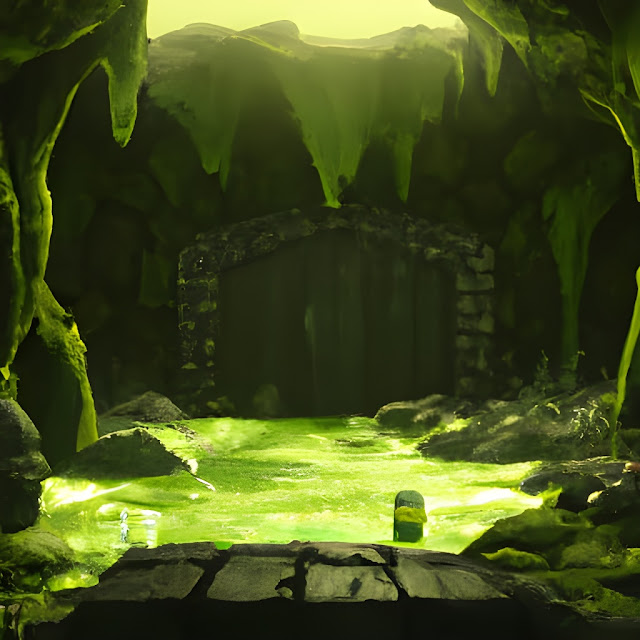Mapping Your Castles, Crypts, & Caverns
 Given the origins of the roleplaying hobby—in wargaming and in the drawing of dungeons that the first player characters, and a great many since, explored and plundered—it should be no surprise just how important maps are to the hobby. They serve as a means to show a tactical situation when using miniatures or tokens and to track the progress of the player characters through the dungeon—by both the players and the Dungeon Master. And since the publication of Dungeon Geomorphs, Set One: Basic Dungeon by TSR, Inc. in 1976, the hobby has found different ways in which to provide us with maps. Games Workshop published several Dungeon Floor Sets in the 1980s, culminating in Dungeon Planner Set 1: Caverns of the Dead and Dungeon Planner Set 2: Nightmare in Blackmarsh; Dwarven Forge has supplied dungeon enthusiasts with highly detailed, three-dimensional modular terrain since 1996; and any number of publishers have sold maps as PDFs via Drivethrurpg.com. Loke Battle Mats does something a little different with its maps. It publishes them as books.A Loke BattleMats book comes as a spiral-bound book. Every page is a map and every page actually light card with a plastic covering. The fact that it is spiral-bound means that the book lies completely flat and because there is a map on every page, every map can be used on its own or combined with the map on the opposite page to work as one big, double-page spread map. The fact that the book is spiral bound means that it can be folded back on itself and thus just one map used with ease or the book unfolded to reveal the other half of the map as necessary. The fact that every page has a plastic covering means that every page can be drawn on using a write-on/wipe-off pen. It is a brilliantly simple concept which has already garnered the publisher the UK Games Expo 2019 People’s Choice Awards for Best Accessory for the Big Book of Battlemats and both the UK Games Expo 2019 Best Accessory and UK Games Expo 2019 People’s Choice Awards Best Accessory for the Giant Book of Battle Mats.
Given the origins of the roleplaying hobby—in wargaming and in the drawing of dungeons that the first player characters, and a great many since, explored and plundered—it should be no surprise just how important maps are to the hobby. They serve as a means to show a tactical situation when using miniatures or tokens and to track the progress of the player characters through the dungeon—by both the players and the Dungeon Master. And since the publication of Dungeon Geomorphs, Set One: Basic Dungeon by TSR, Inc. in 1976, the hobby has found different ways in which to provide us with maps. Games Workshop published several Dungeon Floor Sets in the 1980s, culminating in Dungeon Planner Set 1: Caverns of the Dead and Dungeon Planner Set 2: Nightmare in Blackmarsh; Dwarven Forge has supplied dungeon enthusiasts with highly detailed, three-dimensional modular terrain since 1996; and any number of publishers have sold maps as PDFs via Drivethrurpg.com. Loke Battle Mats does something a little different with its maps. It publishes them as books.A Loke BattleMats book comes as a spiral-bound book. Every page is a map and every page actually light card with a plastic covering. The fact that it is spiral-bound means that the book lies completely flat and because there is a map on every page, every map can be used on its own or combined with the map on the opposite page to work as one big, double-page spread map. The fact that the book is spiral bound means that it can be folded back on itself and thus just one map used with ease or the book unfolded to reveal the other half of the map as necessary. The fact that every page has a plastic covering means that every page can be drawn on using a write-on/wipe-off pen. It is a brilliantly simple concept which has already garnered the publisher the UK Games Expo 2019 People’s Choice Awards for Best Accessory for the Big Book of Battlemats and both the UK Games Expo 2019 Best Accessory and UK Games Expo 2019 People’s Choice Awards Best Accessory for the Giant Book of Battle Mats.The Castles, Crypts, & Caverns Books of Battle Mats is a ‘Set of 2 Battle Map Books for RPG’. As a set, it comes as two volume set of map books in a slipcase—open ended at either side for easy access. Each of the two volumes is a twelve-inch squire square, spiral bound book, with each containing sixty maps, all marked with a square grid. These start with a pair of maps with just a plain, but quickly leap into depicting particular locations. There are castle walls with towers and stables, great spiraling stairs, a mess hall, temples and dormitories, libraries and ritual rooms, ornamental gardens, befouled sewer tunnels, and caverns set across a variety of terrain types, and much, much more. And this is more or less the same in each of the two books. This does not mean that the maps are exactly the same in each book. Rather they are thematically similar and this leads into what is perhaps the greatest feature of the Castles, Crypts, & Caverns Books of Battle Mats.
Each two-page spread of the two volumes of the Castles, Crypts, & Caverns Books of Battle Mats consists of two linked maps—physically and thematically. The Game Master can use either of the maps on the two-page spread on their own or together, as a twelve by twenty-four-inch rectangular map. That though is with the one volume. With two volumes together, the Game Master can combine any single map from one volume with any single map from the other, and if that is not flexible enough, any two-page spread from one volume can be placed next to a two-page spread from the other, in the process, creating a twenty-four by twenty-four-inch square map. What is means is that the Game Master can connect the two sections of castle walls to create a longer section, the sewers can be extended, and the mess hall, dormitories, and other sections placed together to form a barracks, for example. As with the other titles in the range, this gives the Castles, Crypts, & Caverns Books a fantastic versatility which the Game Master can take advantage of again and again in choosing a combination of map pages from the two volumes to create location after location, and then use them to build encounter after encounter.
The individual maps are excellent, being bright, vibrant, detailed, and clear. They are easy to use and easy to modify. A Game Master can easily adjust them with a write-on/wipe-off pen to add features of her own. This is especially important if the Game Master wants to use a map which has previously featured in one of her adventures. She can also add stickers if she wants new features or even actual physical terrain features.
There are four books in the series—the Castles, Crypts, & Caverns Books of Battle Mats, The Wilderness Books of Battle Mats, The Dungeon Books of Battle Mats, and The Towns & Taverns Books of Battle Mats. There is a difference between the Castles, Crypts, & Caverns Books of Battle Mats and the other titles which is both an advantage and a disadvantage for this set of books. The difference is that instead of focusing of one or two themes, such as dungeons or towns and taverns, the Castles, Crypts, & Caverns Books of Battle Mats obviously focuses on three. This gives its a flexibility which means it slots easily alongside a wider range of maps from the other three books in the series. For example, the castle maps from the Castles, Crypts, & Caverns Books of Battle Mats can abut against the street maps from The Towns & Taverns Books of Battle Mats or the caverns added to those in The Dungeon Books of Battle Mats. However, it is not quite possible to create a complete castle or fortress or other buildings or similar buildings with this book set. Rather, it feels as if the Castles, Crypts, & Caverns Books of Battle Mats is a book of abutments, sections that support and expand the maps in the other entries in the series, ratehr than being a standalone product. Consequently, they are not necessarily that easy to use on the fly, to ready up an encounter at a moment’s notice. Instead, they are easier to use as part of the Game Master’s preparation and then have everything necessary to play. Then obviously, the maps cannot be used over and over lest familiarity become an issue. Neither of these are issues which will prevent a Game Master from using the Castles, Crypts, & Caverns Books of Battle Mats, but rather that she should be aware of them prior to bringing them to the table.
Physically, the Castles, Crypts, & Caverns Books of Battle Mats is very nicely produced. The maps are clear, easy to use, fully painted, and vibrant with colour. One issue may well be with binding and the user might want to be a little careful folding the pages back and forth lest the pages crease or break around the spiral comb of the binding. Although there is some writing involved in the Castles, Crypts, & Caverns Books of Battle Mats, it is not really what a Game Master is looking for with this two-volume set. Fortunately, the writing is a little sharper than in previous entries in the series.
There is no denying the usefulness of maps when it comes to the tabletop gaming hobby. They help players and Game Masters alike visualise an area, they help track movement and position, and so on. If a gaming group does not regularly use miniatures in their fantasy games, the Castles, Crypts, & Caverns Books of Battle Mats might not be useful, but it will still help them visualise an area, and it may even encourage them to use them. If they already use miniatures, whether fantasy roleplaying or wargaming, then the maps in the Castles, Crypts, & Caverns Books of Battle Mats will be useful—but only to an extent and then really only best used with the other volumes in the series. Still there are so many fantasy roleplaying games which Castles, Crypts, & Caverns Books of Battle Mats will work with, almost too many to list here…
The Castles, Crypts, & Caverns Books of Battle Mats is full of attractive, ready-to-use maps that the Game Master can bring to the table for the fantasy roleplaying game of her choice. As with other entries in the series, the Castles, Crypts, & Caverns Books of Battle Mats is both practical and pretty, but its broader focus that it is not quite as useful an accessory for fantasy gaming in general with the rest of the line.























